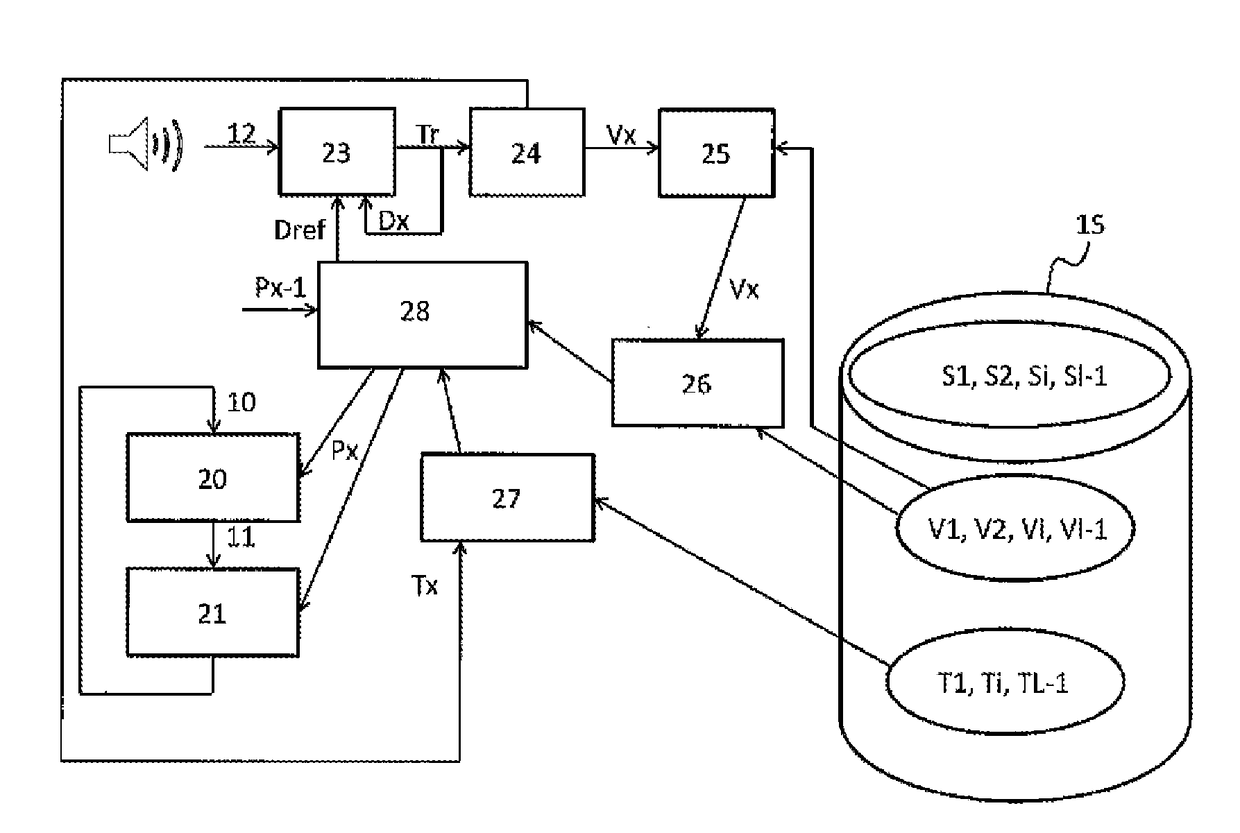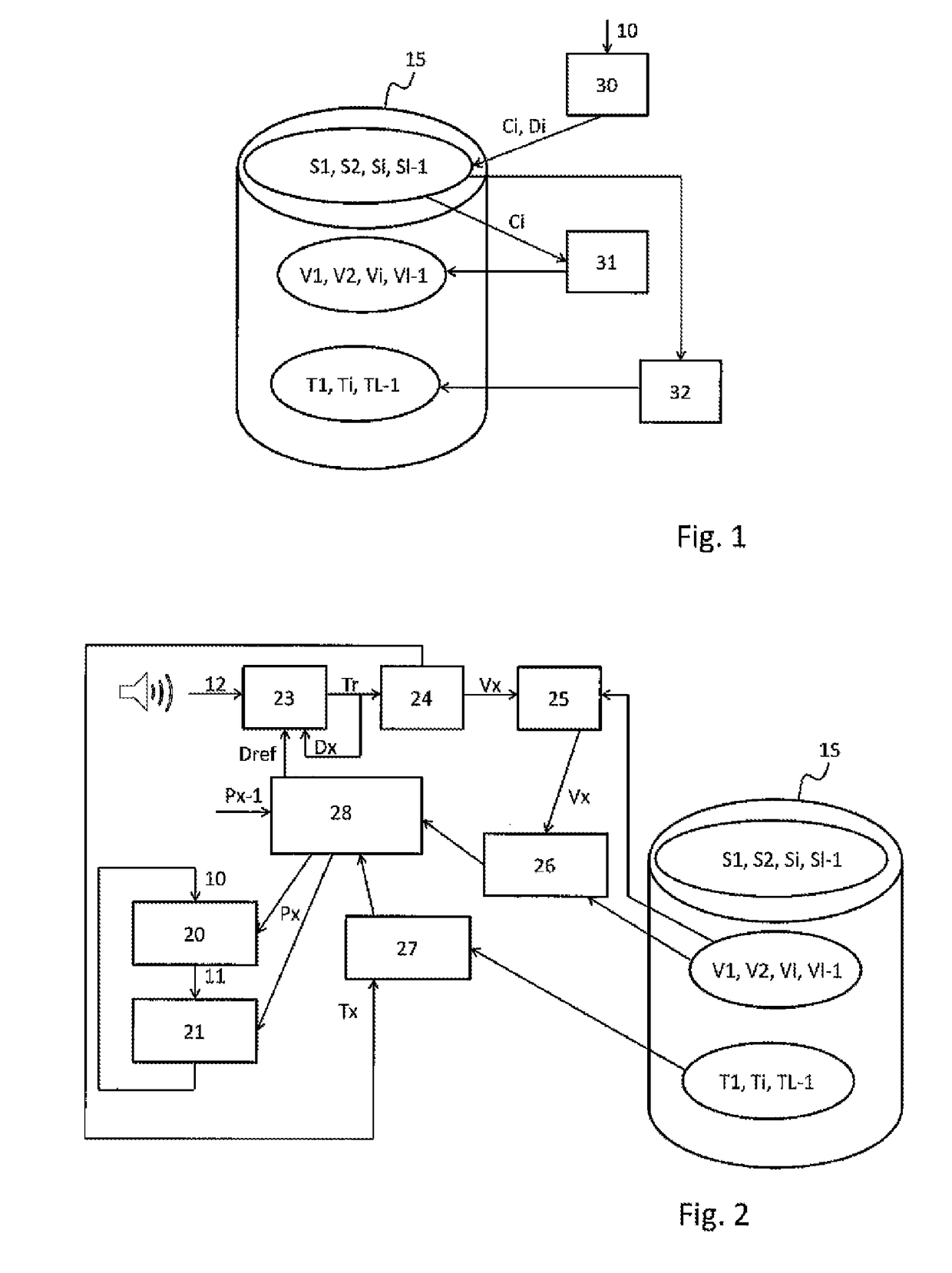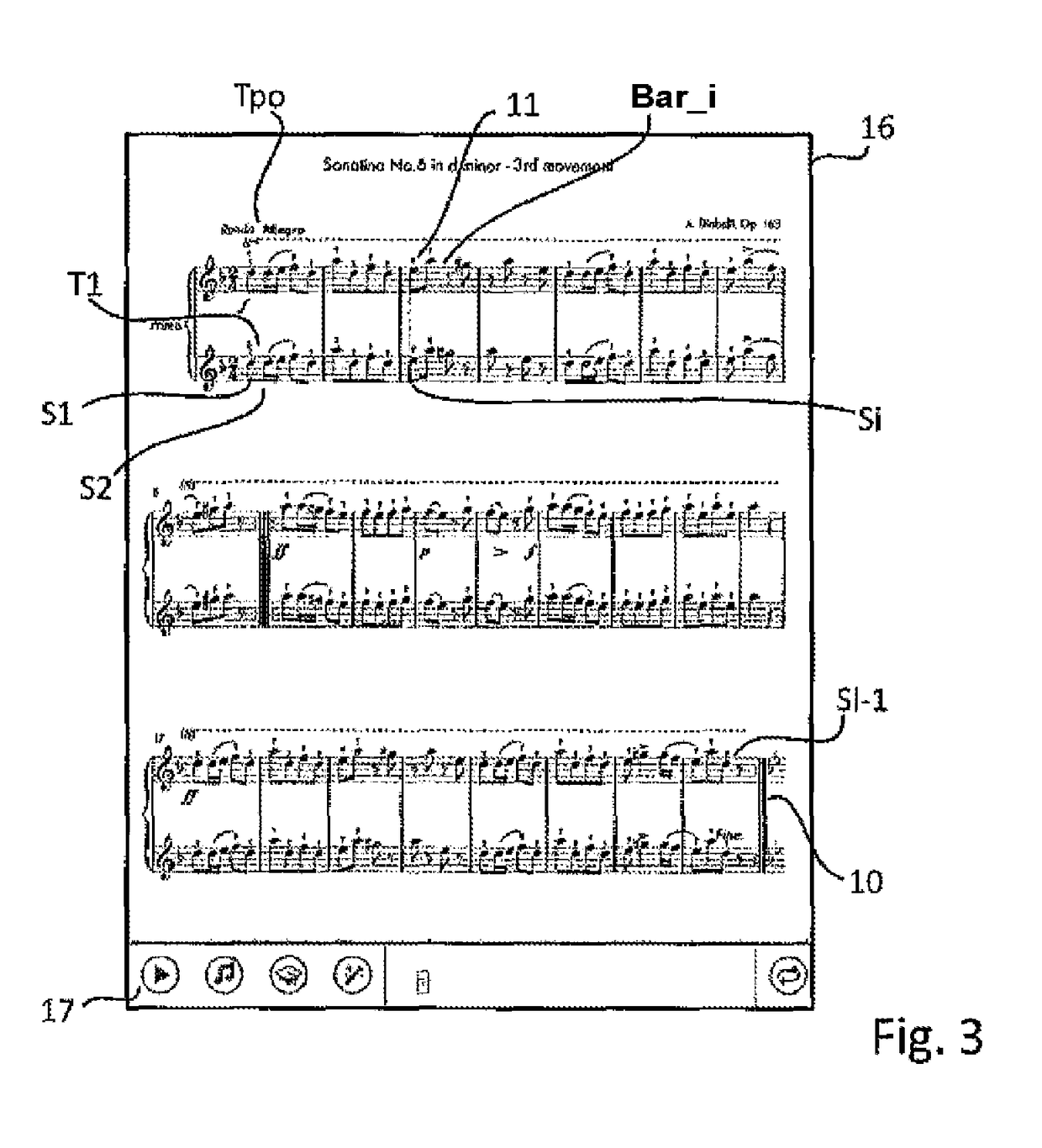Method for following a musical score and associated modeling method
a musical score and modeling method technology, applied in the field of musical score reading, can solve the problems of not being able to reduce the speed of scrolling of the musician cannot reprise a part of the score, so as to achieve the effect of acceptable computation accuracy
- Summary
- Abstract
- Description
- Claims
- Application Information
AI Technical Summary
Benefits of technology
Problems solved by technology
Method used
Image
Examples
Embodiment Construction
[0025]FIG. 1 illustrates the steps of a method for modeling a musical score 10 in which the musical score 10 is sliced, in a step 30, into a series of theoretical chords S={S0, S1, . . . , Si, SI−1}. Each theoretical chord of S is associated with a content Ci, a, possibly null, set of pitches, and with a duration Di possessing a beginning and an end. The beginning and the end of the chord are respectively the minimum and maximum temporal values before the content Ci of the chord changes.
[0026]The content Ci of each theoretical chord Si is represented, in a step 31, in the form of a chromatic vector Vi. Preferably, a chromatic vector Vi consists of a range of twelve scalars whose value lies between 0 and 1, each scalar being associated with one of the half-tones of the chromatic range: do, do#, re, re#, mi, fa, fa#, sol, sol#, la, la#, ti. Preferably, the norm of each chromatic vector Vi is equal to 1. The differences of octaves dissolve inside this representation as a chromatic vect...
PUM
 Login to View More
Login to View More Abstract
Description
Claims
Application Information
 Login to View More
Login to View More - R&D
- Intellectual Property
- Life Sciences
- Materials
- Tech Scout
- Unparalleled Data Quality
- Higher Quality Content
- 60% Fewer Hallucinations
Browse by: Latest US Patents, China's latest patents, Technical Efficacy Thesaurus, Application Domain, Technology Topic, Popular Technical Reports.
© 2025 PatSnap. All rights reserved.Legal|Privacy policy|Modern Slavery Act Transparency Statement|Sitemap|About US| Contact US: help@patsnap.com



